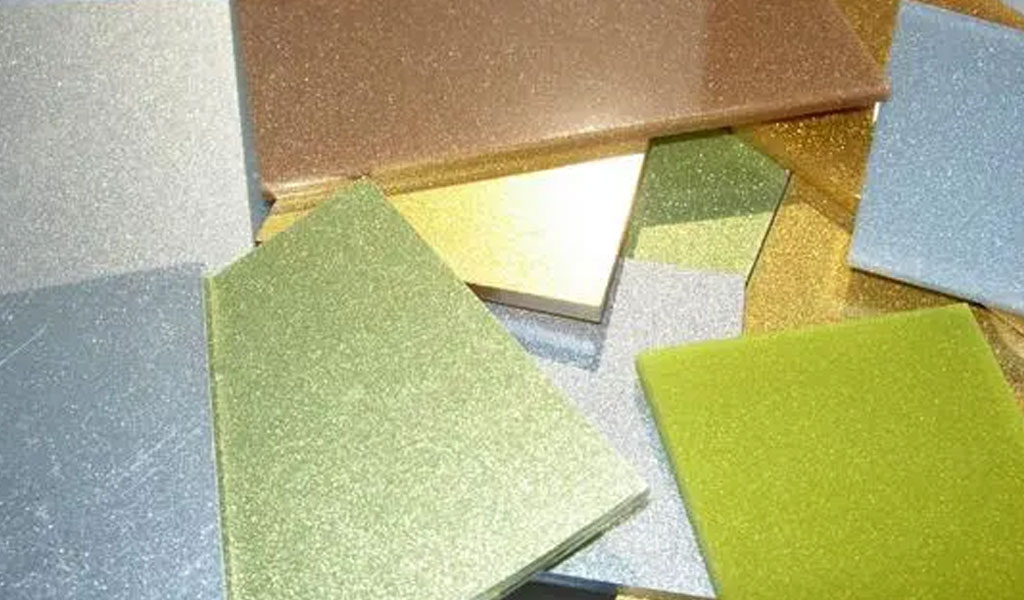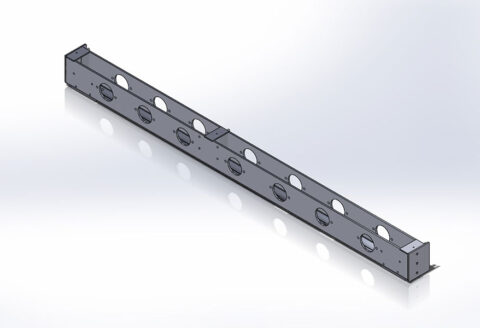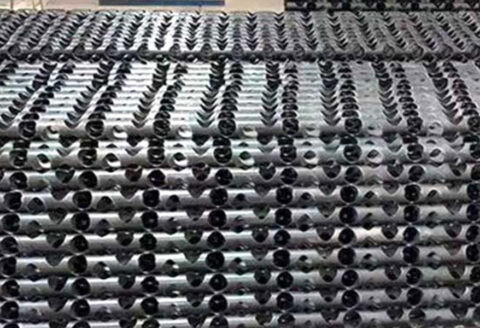
Acrylic is a plastic polymer material.
Acrylic is actually a plastic polymer material, also known as plexiglass. It is a material polymerized from polymethylmethacrylate (PMMA) and sheets. It has very good transparency, chemical stability and weather resistance.
It is also easy to dye and process, and its appearance and texture are similar to glass, but it is not fragile. Therefore, it is widely used in daily life and construction.
Advantages of acrylic
Compared with traditional ceramic materials, in addition to its unparalleled high brightness, acrylic also has the following advantages: good toughness, not easy to break, and strong repairability. Using acrylic to make basins, bathtubs, and toilets is not only exquisite in style and durable, but also environmentally friendly.
Disadvantages of acrylic
Due to the difficulty and high cost of acrylic production, there are many low-quality and low-cost substitutes on the market. These substitutes are also called “acrylic”. Ordinary organic boards are cast with ordinary organic glass cracking materials and pigments. The surface hardness is low and easy to fade. After grinding with fine sand, the polishing effect is poor and a certain amount of formaldehyde is released.
Acrylic performance characteristics
The wear resistance of acrylic sheets is close to that of aluminum, has good stability, and is resistant to corrosion by various chemicals.
Acrylic sheets have good cutting properties and can be either thermoformed or machined.
It has crystal-like transparency, with a light transmittance of over 92%, soft light, and clear vision. Acrylic dyed with dyes has a good color development effect.
Acrylic sheets have good printability and sprayability. Appropriate printing and spraying processes can give acrylic products ideal surface decoration effects.
Application areas of acrylic:
- Construction applications: showcases, soundproof doors and windows, lighting covers, telephone booths, etc.
- Advertising applications: light boxes, signs, signs, display racks, etc.
- Transportation applications: doors and windows of trains, cars and other vehicles.
- Industrial applications: instrument surface panels and protective covers, etc.
- Lighting applications: fluorescent lamps, chandeliers, street lampshades, etc
How To Cut Acrylic Plexiglass
How To Cut Acrylic?Acrylic board (Plexiglass) is a widely used plastic material. It has the characteristics of high transparency, durability and so on. It is widely used in advertising signs, light box production, display cabinets and other fields. There are many ways to process acrylic sheets, one of the most commonly used is cutting. Next we will introduce how to cut acrylic sheets.
1. Mechanical cutting
Mechanical cutting is a method of cutting acrylic sheets using mechanical equipment. This method is suitable for medium-thick acrylic sheets. Mechanical cutting is a fast and efficient way to cut, but it produces noise and plastic shavings and requires the use of safety precautions.
2.Laser cutting
Laser cutting is a method of cutting acrylic sheets using high-energy laser beams. This method allows precise cutting of acrylic sheets, producing smooth, crisp edges. Acrylic Laser cutting can also perform curve cutting and complex shape cutting, and is suitable for cutting thin acrylic sheets.
3.Hand-cut
Hand cutting is the method of cutting acrylic sheets using hand tools. This method cuts slower, but can achieve any shape of cut. Hand cutting requires skill and experience, requires good hand-eye coordination, and is a method suitable for small-scale production.
No matter which cutting method is used, you need to pay attention to the following points when cutting acrylic sheets:
- 1. Safety: Chips and noise will be generated when cutting acrylic sheets. Safety measures should be taken, such as wearing goggles, earplugs, gloves, etc.
- 2. Equipment maintenance: When using mechanical cutting or laser cutting, the equipment needs to be maintained and maintained regularly to ensure the cutting effect and equipment operating efficiency.
- 3. Reprocessing: Consider the waste of acrylic sheets when cutting, minimize waste, and avoid over-processing.
In short, there are many ways to cut acrylic sheets, each with its own unique advantages and scope of application. Choosing a cutting method that suits you can help you better utilize the performance and application effects of acrylic sheets.
Comparison Of Acrylic Cutting Methods
Acrylic can be cut in a variety of ways, each with its own specific advantages and disadvantages. Here are common acrylic cutting methods and their pros and cons:
1. Laser cutting:
Advantage:
- – High precision: Laser cutting can achieve very fine cutting with high precision.
- – Efficient and fast: Laser cutting is fast and suitable for mass production or processing of complex-shaped parts.
- – Non-contact processing: no physical damage will occur.
- – Able to achieve complex pattern cutting: Through program control, various complex patterns and shapes can be created.
Disadvantages:
– Requires professional operation and maintenance.
2. CNC tool cutting:
Advantage:
- – Suitable for acrylic sheets of different thicknesses;
- – Suitable for cutting some simple shapes.
Disadvantages:
- – The cutting accuracy is lower than that of laser;
- – Cutting speed is slow.
3. Sawing and cutting:
Advantage:
- – Suitable for thicker acrylic sheets;
- – Low initial investment.
Disadvantages:
- – Lower cutting accuracy;
- – Easily produce burrs and cracks on the cutting surface.
4. Heated cutting (such as heated knives, hot wire cutting):
Advantage:
- – Suitable for cutting some special shapes;
- – Gentle cutting method without stress.
Disadvantages:
- – Slow cutting speed;
- – High requirements on operators.
Overall, laser cutting is the most commonly used method for cutting acrylic materials because it can provide high precision, efficiency and speed without requiring direct contact with the material surface. However, for certain shapes, thicknesses or where production is smaller, other cutting methods can provide suitable solutions. When choosing a cutting method, various factors need to be considered to determine the most suitable cutting method based on your specific requirements and budget.
For complex structures or three-dimensional acrylic materials, laser cutting is the preferred cutting method. Here are the advantages of laser cutting when working with this type of material:
- 1. High-precision cutting: Laser cutting can achieve very fine cutting and can produce smooth cutting edges on the acrylic surface, reducing secondary manufacturing steps after cnc machining. For complex structures or three-dimensional acrylic materials, precise cutting is very important.
- 2. Multi-angle cutting capability: Laser cutting has multiple degrees of freedom and can be cut at multiple angles to adapt to complex structures or three-dimensional shapes. This allows laser cutting to complete multiple cutting angles in one operation, thus reducing cut time.
- 3. Flexible cutting capabilities: Laser cutting can create complex patterns and shapes according to design requirements and adapt to different structural needs. This makes laser cutting ideal for cut acrylic materials with complex structures or three-dimensional shapes.
- 4. Non-contact cutting: Laser cutting is a non-contact cutting method that will not cause physical damage to acrylic materials. This is very important to ensure the delicate appearance quality.
Although laser cutting has many advantages when fabrication complex structures or three-dimensional acrylic materials, when choosing a cutting method, factors such as the thickness of the material, quantity, budget, and equipment availability need to be considered based on actual needs.
How To CNC Machining Acrylic Plexiglass
- 1. Open materials. Use a cutting machine to cut acrylic sheets. Only when the dimensions of the acrylic products are clear can the acrylic products be cut to avoid material waste.
- 2. Engraving. After the cutting is completed, the acrylic sheet must be preliminarily carved into different shapes according to the shape design requirements of the acrylic product.
- 3. Drill holes. According to the needs of acrylic products, holes of different sizes are punched in the acrylic products.
- 4. Polishing. After cutting, engraving, and drilling, the edges are still rough and can easily scratch your hands, so you need to use a polishing process. You can choose different polishing methods according to different products. Polishing is also divided into cloth wheel polishing, grinding wheel polishing and fire polishing. Then use an edge trimmer to trim the edges.
- 5. Tear the paper. The paper tearing process is a step before the screen printing and heat bending process, because the acrylic plate will have a layer of protective paper after leaving the factory, and the protective sticker attached to the acrylic plate must be removed before screen printing and heat bending.
- 6. Hot bending. Acrylic can be transformed into different shapes through hot bending. Hot bending is also divided into two types: overall hot bending and local hot bending. Different hot bending processes can be selected according to the actual situation.
- 7. Silk screen printing. If users need to display their own brand logo or slogan, they will choose silk screen printing. Silk screen printing is divided into two methods: single-color screen printing and four-color screen printing.
- 8. Bonding and packaging. These two steps are the last two steps of the acrylic cnc machining process, which include bonding and assembly of the processed parts as well as packaging and testing before leaving the factory.


